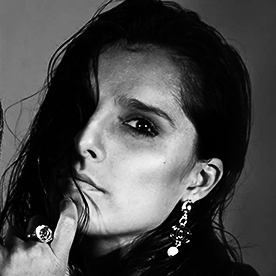What is Art Direction?
The Graphic Act must be understood regardless of the cultural or social context in which it is expressed and in which it must deliver its message.
A logotype, pictogram, poster or visual cover must meet visual and semantic culture requirements common to all of its viewers to be effective. An Art Director must know the semantic and original quintessence of the message that he must deliver, as much as he must know the one of the public for whom it is destined to.
This is why being an Art Director does not only require mere manual dexterity, knowledge of softwares or graphic design techniques ; he must be the psychologist of the image he creates, the archaeologist of the context of the society in which he lives and the historian of his client.
Because an Art Director directs. He gives direction. He makes choices. He offers alternatives. He questions his interlocutor on leads that can be surprising or daring. An Art Director must be a guide of the Spirit as much as a guide of the Form. A fellow traveler who does not impose all his answers but who asks all the questions. The right questions.
And it is from this dialogue between the Art Director and his client that the sincerity of the message and the appropriate creation of its form are born.

Why you need it…
As an Art Director for over 20 years, I have worked on a wide variety of subjects, themes and mediums. I have dealt with hard and scientific subjects, as well as light and imaginary subjects ; such as geopolitics, conflicts, climate change, economy… but also heroic-fantasy, science fiction, music or children’s games.
How can we manage to deal qualitatively with these extreme themes which – in appearance – have nothing in common?
It’s very simple: there are no oppositions between these themes ; there is no contradiction except in their understanding. Or rather, the only contradiction is in the way the viewer THINKS he should receive such or such a theme: this is called cognitive and normative biases.
A cognitive bias is a systematic error inherent in the human condition. A normative bias is a prejudice, an a priori, cultural, racial, social or religious conditioning -collective or individual- which affects the perception of a form.
The role of the Art Director is not to judge whether such or such a vision is “good” or “bad”. He must free, if needed, his client from any biases. Thus, he helps him to discern if he is concordant or discordant with his own referential AND with the referential of the public he is addressing.
Then, it is the duty of the Art Director to guide him by proposing alternatives which allow him to overcome these biases.
One Sentence, One Image
Each culture has its exclusive language but images are inclusive and common to all.
If you are not Indian and you read or hear “Parvat”, you don’t understand. If you are not Russian and you read or hear “Gora”, you don’t understand. And if you’re not Hawaiian and you read or hear “Mauna”, you don’t understand.
On the other hand, if I draw a Mountain ; THEN, the Indian, the Russian and the Hawaiian will all understand what I am talking about, even if each of them has different words for “Mountain”. And this, even if it is attached to different semantics, experiences or histories.
It is in this perspective that the role of the Image is to deliver its message in an instant.
This is why you need an Art Director to advise you. He’s NOT here to tell you who you should be according others ; it is here to help you express to others who you really are.
If the soul of a project, a brand or a client was represented by Tea ; then its graphic expression would be its recipient. Whether you pour the Tea into a porcelain cup, a decorated glass or a plastic cup, it will always be the same Tea…
…however, drinking your Tea from a plastic cup, a decorated glass or a porcelain cup will not transmit the same message.



















